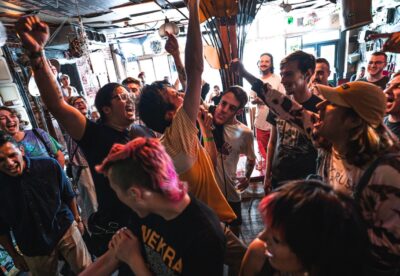Even with incredible and inventive green shoots across the arts in this city (see this brilliant summary from Louise Blackwell), this virus has taken Brighton’s events, retail and tourism economy hostage – read Brighton & Hove’s Assistant Director for Culture, Tourism & Sport, Donna Chisholm’s, sobering article here. As ever, it is the people at the sharp end who feel the biggest impact.
But there are three clear areas of thought that run deep through Brighton’s creative sector, and have been dominating conversations, planning and mood.
How do I know? In collaboration with Brighton & Hove City Council and the Arts & Creative Industries Commission, my team have been able to think about where best to place helpful energy. Over the past 10 weeks, we’ve been opening up our pool of consultants, mentors and planners to give time to as many creative business owners, artists and freelance makers/performers as we can (over 120 creatives have now accessed free 1:1 support, workshops or expert webinars). This has helped us feed back into local emergency planning, so that decisions are made based on actual need.
Motivation & Confidence
The biggest, noisiest and dominant trend in the early calls we made – was simply that for many creative people, working in lockdown is bad news.
Yes, in many cases this is can be to do with internal motivation, lack of adequate space, juggling the needs of children (not literally, apart from the circus performers). But actually this is more about the inherent need for entrepreneurs and artists to be plugged-in to other creative people, to audiences, soaking up ideas, testing work in different spaces, feeling part of something positive.
One of our associates, taking the calls, is Lucy, and she told me:
“those organisations who normally get work from word of mouth, networking and events have seen that dry up but, most I’ve spoken to don’t feel able to do pro-active engagement. Most know where to start, but one admitted she just didn’t want to do it – and in the next breath said her organisation is close to failing if she didn’t bring in money.”
The rules of engagement on this aren’t always clear, and that’s very stressful. People are scared of pushing away their hard-won audiences by seeming too needy, too greedy, too pushy. In bigger organisations, people were more worried about preserving what they’ve got; avoiding losing people or products that are usually brilliant (but come with costs).
New Partnerships, Networks, Collaborations
One of our resident mentors is Tony, who was hearing disquiet at the one-size-fits-all support from government:
“There is a risk of burn-out and this is by no means over yet. Reopening is happening for some but not all now; the guidelines are sector specific, complex and don’t tell the whole story. Some councils and chambers are providing good centralised resources, but some people feel like they are just left to get on with it.”
We have been able to make some introductions between people, but we need to do more. Larger cultural organisations such as Fabrica and Brighton Dome have pledged practical support for smaller arts organisations, which makes a big difference. But there is more to do.
Networks such as EPIC and What Next? have led the way with collaborative ideas and show this city – and its networks – at its best.
Resilience & Sheer Bloody-mindedness
Brighton creative businesses are quite badass, actually. We spoke to most people twice, and in the first call people were anxious and facing a pretty bloody scary abyss. None were without hope, but understandably there was a lot of fear.
Jeremy is also in our team, and was taking a number of calls:
“One key thing is that the participants knew they were having a follow up call and so they knew that they should act on the advice given in the first call. One also said that, in preparing for call two, she realised just how much progress she had made”
The feedback we had was really special.
“It was helpful to have a space, completely apart from my usual networks/colleagues/friends. I appreciated being given room to rant, but it was helpful to reflect on what had actually been achieved since the first call; what had changed, been let go of, or developed”.
But let’s not sugar the pill. 2020 is a write-off for many businesses and projects, already operating on low margins or restricted public subsidy. For every creative business that has found a new digital life and started a big reset, there is another facing closure until after Christmas, or longer.
The people we spoke to have bags of ideas, but help is needed from all corners to mobilise them.
How can you help?
Author: Richard Freeman, always possible
[email [email protected]]
August/September 2020



